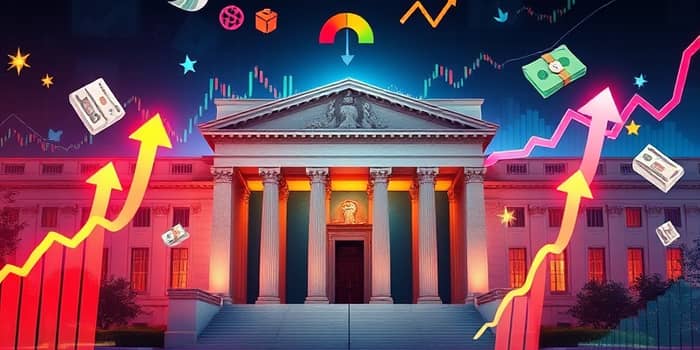
When the Federal Reserve makes a policy decision, reverberations echo through every corner of the financial world. At its June 18, 2025 meeting, the Fed chose to hold rates steady, but the question on every investor's mind remains: what comes next? By understanding the Fed’s strategy and potential shifts, you can position your portfolio to weather volatility and capture upside as markets adjust.
Since December 2024, the federal funds rate has sat at 4.25% to 4.50%, a range designed to curb inflation without derailing growth. The Fed describes economic activity as expanding at a “solid pace,” even as it confronts a persistently elevated inflation rate that has burdened households and squeezed profit margins.
The dual mandate of maximum employment and 2% inflation guides every policy deliberation. With unemployment near historic lows and inflation above target, the Fed walks a tightrope, pledging a careful assessment of incoming data before making any move.
In the backdrop are global trade tensions and new tariffs that could push costs higher, complicating the decision to ease or tighten. Fed officials have noted an uncertain outlook around global trade dynamics as they calibrate policy, aware that premature easing could reignite price pressures.
The Philadelphia Fed’s Q2 2025 survey projects real GDP growth slowing to 1.4%, down from 2.4% last year. Consumer spending, the engine of the U.S. economy, shows signs of fatigue as households contend with higher prices for essentials. At the same time, businesses face tighter margins and may delay expansion plans.
Labor markets remain surprisingly resilient, yet job gains are forecast at 140,900 per month—below the 145,000 pace of recent years. A rise in unemployment toward 4.5% by early 2026 could shift the Fed’s narrative from data-driven caution to rate relief for growth support.
Inflationary forces are twofold: domestic demand and imported costs from tariffs. While service-sector inflation has moderated, goods prices continue to climb. This divergence suggests the Fed must balance easing for growth with vigilance against a resurgence in price pressures.
Most forecasters anticipate the first rate cut in the second half of 2025, totaling 0.50 percentage points via two expected quarter-point rate cuts. Beyond 2025, markets price in a gradual easing cycle that could lower rates to 2.25–2.50% by end-2027, with the 10-year Treasury yield falling toward 3.25% and mortgage rates easing to about 5%.
History shows that markets often rally in anticipation of Fed cuts, but timing and magnitude can vary. In the early 2000s cycle, equities climbed ahead of cuts, only to stall when rate reductions were smaller than expected. Investors should be mindful that the Fed’s communication can move markets even without actual rate changes.
This data underpins the case for both caution and opportunity. Bond investors eye long-term yields, while equity markets price in corporate earnings growth that may hinge on lower borrowing costs and consumer sentiment.
As the Fed’s policy evolves, each asset class reacts differently to the interest rate environment. Investors can harness these dynamics to position portfolios defensively or aggressively based on personal goals and risk tolerance.
Sectors tied to interest rates exhibit distinct performance patterns. Utilities and real estate investment trusts often benefit from rate cuts, while banks and financials may see net interest margins compress. Commodity prices, especially precious metals, can react to inflation expectations and currency movements.
In this dynamic environment, no single strategy fits all. Customizing allocations according to time horizon, income needs, and risk appetite remains paramount:
Regularly reviewing holdings and keeping an eye on Fed communications and key economic releases—such as the Consumer Price Index, PCE inflation readings, and monthly employment reports—will allow you to recalibrate as the outlook evolves.
Despite clear forecasts, several risks could disrupt the anticipated path:
By staying data-dependent in a changing landscape, you can adapt proactively rather than react defensively. The Fed’s next move will shape interest rates, credit conditions, and investor sentiment. With a disciplined plan, you can navigate the uncertainties and harness opportunities for long-term growth.
References













